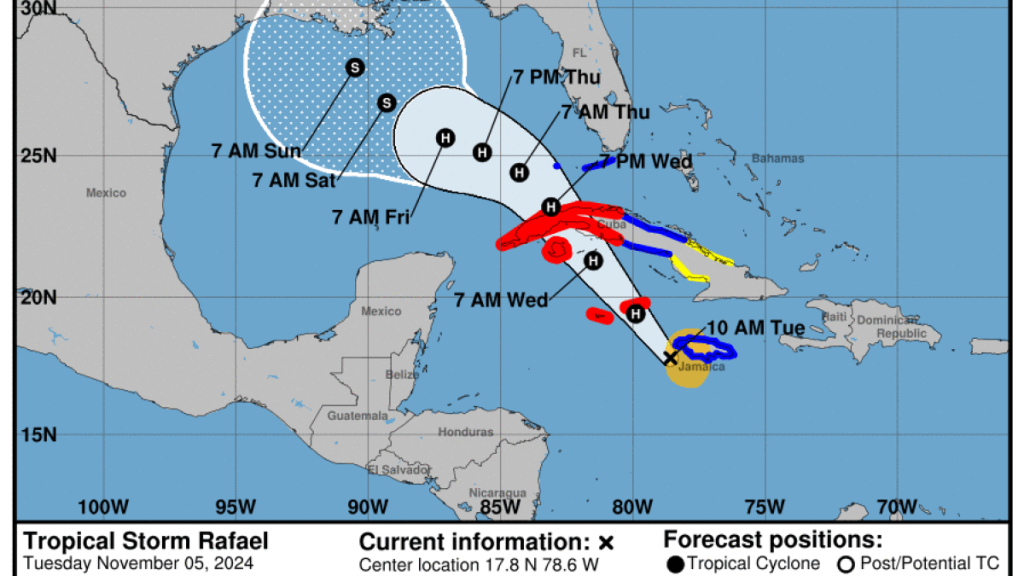Tropical Storm Rafael is intensifying in the northwestern Caribbean and is expected to strengthen into a hurricane near the Cayman Islands before making landfall in Cuba. The storm is currently located south-southwest of Montego Bay, Jamaica, with sustained winds of 60mph and moving northwest at 13mph. It is forecasted to pass west of Jamaica before reaching the Cayman Islands and then western Cuba on Wednesday. Beyond Cuba, Rafael is expected to move into the Gulf of Mexico but may face challenges in further development due to unfavourable upper atmosphere winds and dry air.
The storm could worsen Cuba’s ongoing energy crisis, with the country already experiencing power outages due to infrastructure issues and fuel shortages. Cuba is still recovering from the impact of Hurricane Oscar, which struck the island recently and resulted in fatalities. Hurricane warnings are in effect for the Cayman Islands and western Cuba, including Havana, with tropical storm warnings issued for Jamaica, central Cuba, and parts of the Florida Keys. The National Hurricane Center has warned of heavy rainfall across the region, leading to flooding and mudslides with significant rainfall totals expected.
Officials in the Cayman Islands and Jamaica have urged residents to prepare for the storm, with schools and government offices closed as a precaution. Long lines at grocery stores have been reported as people stock up on supplies. In Cuba, evacuation orders have been issued for thousands of residents in the eastern province of Guantanamo. Forecasters have noted that environmental conditions are conducive for Rafael to strengthen, with the potential for heavy rains and tornadoes in the affected areas. The storm is the 17th named storm of the season and is part of a record-breaking hurricane season with above-average activity predicted by the National Oceanic and Atmospheric Administration.
The forecast for the 2024 hurricane season called for 17 to 25 named storms, with as many as 13 hurricanes and four major hurricanes. Rafael would be the 11th hurricane of the season, with four major Category 3 storms already reported. While the hurricane season typically runs from June to November, storms are less likely to occur in the final month due to cooler weather conditions. The impact of Rafael and other storms on the region highlights the importance of preparedness and vigilance in dealing with the potential hazards associated with severe weather events. Residents in the affected areas are advised to stay informed of updates and take necessary precautions to ensure their safety.


